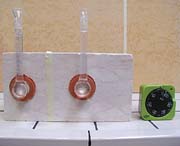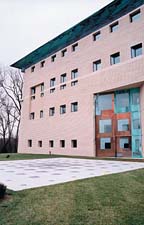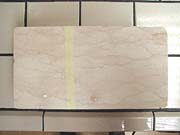
Officially inaugurated in 2000, the external facade of the Italian Embassy in Washington, DC, needed to be addressed last year. During its first four years, the city's tough climate proved to be somewhat demanding of the building's stonework. Over this time, weather, rain and smog had dulled the beauty of its facing, which is comprised of over 43,000 square feet of Pietra Rosa di Asiago (Rosa Perlino) marble from Italy.
In order to address these issues and ensure the building's long-term beauty, industry professionals needed a case-specific system and products that would be effective, but at the same time be delicate enough not to damage the material.

The analysis
A series of inspections revealed that the material had been pretreated during the machining stage and had been treated again after laying. However, both treatments had lost their effectiveness over time. As a result, the problem turned out to be more complex. It was not simply a case of cleaning the facade and applying a protective product, but of removing old treatments and, subsequently, applying products that would not be incompatible with the old protective layers, or at the very least would not lead to chemical reactions with them.
It was also a question of finding a solution for the application criteria. The best approach from a practical point of view seemed to be the airless system, though this had given rise to percolation problems with the previous application. On the basis of this information, Fila's laboratories and research department in Italy carried out a detailed analysis (see “Fila Analysis Summaryâ€) to identify the most suitable system and products for the operation.
The solution
First of all, it was decided to remove the old protective layers using two Fila products: FilaCleaner, a neutral detergent for removing dirt deposited over time, and Fila PS/87, which combines detergent action with the ability to remove old protective layers - but without ruining the material.
Hydrorep was applied manually when cleaning was complete. This is a water-repellent which re-establishes protection on marble and prevents it from absorbing aqueous dirt. Hydrorep penetrates deep into the material and ensures effective and long-lasting protection.

Fila Analysis Summary
The sample sent to Fila's laboratories and research department in Italy was a “Rosa Perlino†pink marble, a limestone typical of the Veneto region in Northeast Italy. We analyzed the faces of the slab, neither of which was treated. The tests were carried out on the face with the most homogeneous smoothness, which had nevertheless not been polished.Waterproofing
The first test was to waterproof a designated part of the face by treating it with Hydrorep. Then, we tested water resistance by placing a drop of water on each of the two areas (treated and untreated) and assessed the angle of incidence of the water. The results of these tests can be seen in the photographs below:
Hence, we carried out the absorption test on the two sectors, with Carsten pipes, which simulate the action of falling rain. The test is illustrated in the photo below.

Conclusions
The results of the experiments, which are clearly visible in the photographs, are as follows:Hydrorep imparts effective water-repellence and an attractive “beading effect.†Even when protracted for hours, the test with the Carsten pipe did not reveal absorption in depth of the material, but only superficial absorption.
The application of Hydrorep therefore guarantees a valid waterproofing not only against water, but also against smog and dirt of different origin, thus easing the cleaning of the surface. Moreover, because of its intrinsic characteristics, Hydrorep lasts for a long time since it is not a topical coating. It is penetrating and does not change the look of the surface, thus giving a very good barrier against the action of the atmospheric agents.
